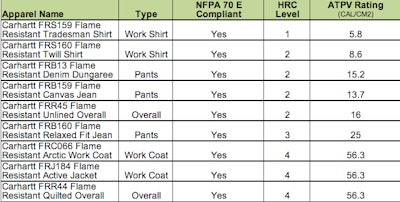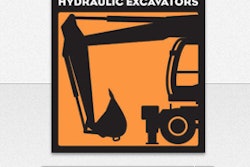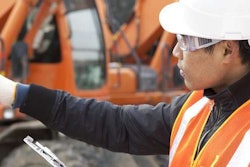 Carhartt’s FRJ184 flame-resistant jacket is NFPA 70E compliant and HRC 4-rated.
Carhartt’s FRJ184 flame-resistant jacket is NFPA 70E compliant and HRC 4-rated.According to MVMFR.com, flame-resistant clothing is characterized as a fabric which self-extinguishes once the source of the ignition is removed. For those in professions that require such clothing, knowing what apparel classifies as flame-resistant can mean the difference between a minor injury and third-degree burns.
Clothing that is treated with flame resistant chemicals helps to slow down the burning process, thereby giving a person more time to escape the fire and prevent getting severely burned.
Garments identified as flame-resistant must go through a flame-resistant test, most commonly known as the Vertical Burn Test, though also known as the ASTM D6413/D6413M-12 test. The test determines the response of textiles to a standard ignition source and provides data for after-flame time, afterglow time and char length.
There are many flame resistant regulations, including those set forth by the National Fire Protection Association: Hazard Risk Category and Arc Thermal Performance Value. Among other things, the NFPA helps to reduce the “worldwide burden of fire and other hazards on the quality of life,” by providing more than 300 codes and standards. Of those codes, the NFPA 70E is one of their most important.
The NFPA 70E or Standard for Electrical Safety in the Workplace sets requirements for safe work practices protecting personnel by reducing exposure to major electrical hazards. Originally developed at OSHA’s request, NFPA 70E “helps companies and employees avoid workplace injuries and fatalities due to shock, electrocution, arc flash, and arc blast,” assisting in compliance with OSHA 1910 Subpart S and OSHA 1926 Subpart K.
Addressing safety-related work practices, safety-related maintenance requirements and safety requirements for special equipment, the Standard includes guidance for making hazard ID, risk assessments, selecting appropriate PPE, establishing an electrically-safe work condition and employee training.
The HRC 2, or Hazard Risk Category, is defined by the NFPA 70E, 2012 Edition to have an arc rating that is greater than or equal to 8 cal/cm², but less than 25 cal/cm². Be careful not to classify HRC 2 as Class 2. Although Class 2 applies to ANSI and other standards, it does not apply to NFPA 70E. HRC and Level are the correct identifiers but to avoid confusion, use the arc rating.
Garments that are HRC 2 compliant are often referred to as daily wear, which includes but not limited to the following: knit or button front FR shirts, work pants or FR jeans and coveralls. Not all daily wear garments are compliant to HRC 2. Once again, check the arc rating to confirm that the garment will provide the necessary protection.
The below chart illustrates the NFPA 70E categorizes the HRC risks from 1-4 and the minimum ARC rating the apparel must have:

The ATPV, or Arc Thermal Protection Value, is defined by the ASTM F 1959-00 as “the incident energy on a fabric or material that results in sufficient heat transfer through the fabric or material to cause the onset of a second degree burn based on the Stoll Curve.”
This ATPV rating is based on the total weight of the fabric and the clothing ranges from untreated cotton, wool, rayon, or even silk materials with a fabric weight of at least 4.5 ounces per square yard to flame retardant (treated) clothing worn in layers.
Carhartt sells a variety of flame resistant clothing, all of which is within the regulation of the NFPA:

A more concise list of flame retardant materials include Twaron, Nomex (a DuPont trademark), Arselon (Khimvolokno trademark), coated nylon, Carbon Foam, M5 fiber, Kevlar, Pyrovatex fr cotton, Technora, Modacrylic, PBI and Wool. For more information, view this slide show on Flame Resistant Safety.
Editor’s note: This content was provided by Dave’s New York, an American retailer located in New York City with over 45 years of experience selling mens and womens workwear. They carry safety, thermal and flame resistant apparel. Check out their website here.












